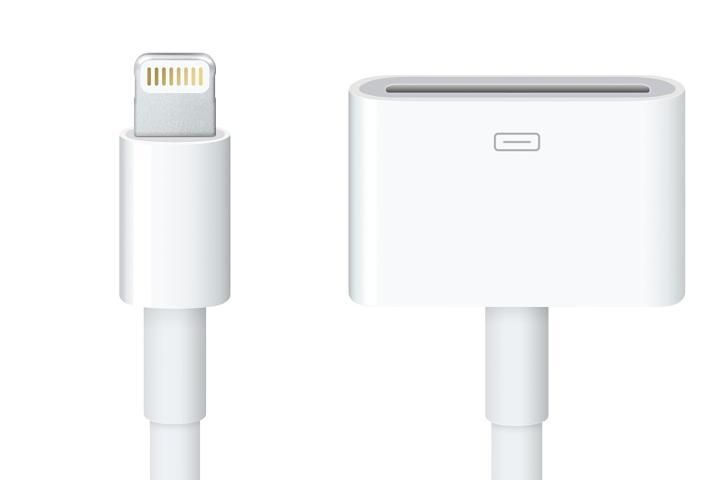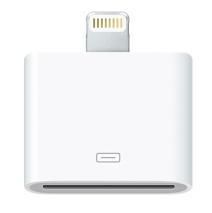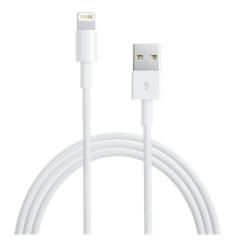The iPhone 5 closed the door on one long-standing aspect of iOS hardware, the 30-pin connector, in favor of the new Lightning design. Lightning's smaller and it's reversible, so it sounds like a big improvement, right? Only if you're a fan of awful, proprietary interfaces; Lightning is the physical embodiment of everything wrong with Apple's approach to consumer electronics, as well as its relationship with its customers.
Proprietary interfaces like Lightning are problems that continue to plague electronics, year after year. I remember back in the day when my friend got a then state-of-the-art digital music player from Sony. Problem was, it couldn't play MP3s at all, only music files converted to Sony's proprietary ATRAC format, and rather than storing files on a popular, cross-platform memory card, it used Sony's own Memory Sticks. As a result, it was a pain to use and expensive to own. I recall even then being frustrated with Sony's apparent desire to be different just for the sake of being different, at the expense of its users. Sony's at least started to come around to SD cards over the years, but this same tune keeps getting replayed over and over by manufacturers like Apple.
Don't get me wrong, the 30-pin connector wasn't much good either, but Apple had to take some stab at a common interface back when it was just getting into mobile electronics, and I can understand its desire to try future-proofing things a little with such a connector carrying so many signals. What I can't get behind is going through the huge effort to switch your entire platform to a new connector design, and not taking advantage of that opportunity to adopt an industry standard.
Let's take a step-by-step look at what's wrong with Lightning:
It's Wasteful
We don't need any more cables, adapters, and chargers in our lives. We've already seen some carriers and manufacturers start to embrace a move towards reducing all the e-waste being produced by the accessories for our phones, but Apple seems to be taking the opposite approach. Instead of finding a way to make future iPhones and iPads work over cables we already have (like, I don't know, regular micro USB cables?), Apple has users adding to their collections of accessories.
Now, maybe I'd be kinder in this regard if it was clear that Lightning offered significant advantages over USB (or MHL-USB), but there just isn't any evidence for that at the moment.
Who Cares About Reversible?
Perhaps I'm just being a bit thick-skulled about this, but who the heck is having such a difficult time plugging-in USB cables that a reversible design seems preferable? Do they pause for a moment each morning, confused as to which shoe goes on which foot? You look at the connector, and then plug it in the one and only way it fits. Like a shoe that you could wear just as well on either foot, it's only an improvement over traditional designs if you're failing pretty hard at life in the first place.
But what about plugging in a cable without looking? Sure, this is a real problem... for things like the backs of stereos or TVs where you can't always see what you're doing as you stretch behind one, cable in hand. You can look at your smartphone. It's in your hand. You can see the cable. USB cables even have a little symbol on them to remind you of the correct orientation, if you're too lazy to look at the connector itself.
DRM Has No Place In Cables
We're still waiting to get full details on it, but from initial tear-downs of Lightning cables, it appears Apple's included an authentication chip, to let Lightning-supporting hardware differentiate between genuine Apple and third-party cables. Does it make Lightning work better? No. Does it make things more expensive for everyone involved? Yes. Does it benefit anyone, at all, besides Apple? Nope.
So What Does All This Say About Apple?
It's clear from the design decisions Apple made, cutting down on excess pins, and shrinking the connector's size, that it was going for something at least similar to micro USB. Sure, it wants some functionality that goes beyond straight-up USB, but that's why we have backwards-compatible extended connectors like the five and eleven-pin MHL-USB designs you'll find in smartphones already.
Considering the huge benefit to its customers that going with a standard connector like that would afford them, I can't help but think Apple chose to go proprietary at their expense. Design choices like the reversible connector feel like empty gestures to give Apple fans some rationale for the decision to stray from standards, when instead they offer little tangible improvement.
Lightning says that Apple doesn't care about you, about the environment, or about finding its place in a vast ecosystem of smartphones and tablets. Lightning says Apple would like some more money, please, that being unique is more important than being functional, and that it's confident that its users will go along with any bad decision the company makes, because what are they going to – change platforms? You're locked in, and Lightning is just Apple taunting you with that fact.



